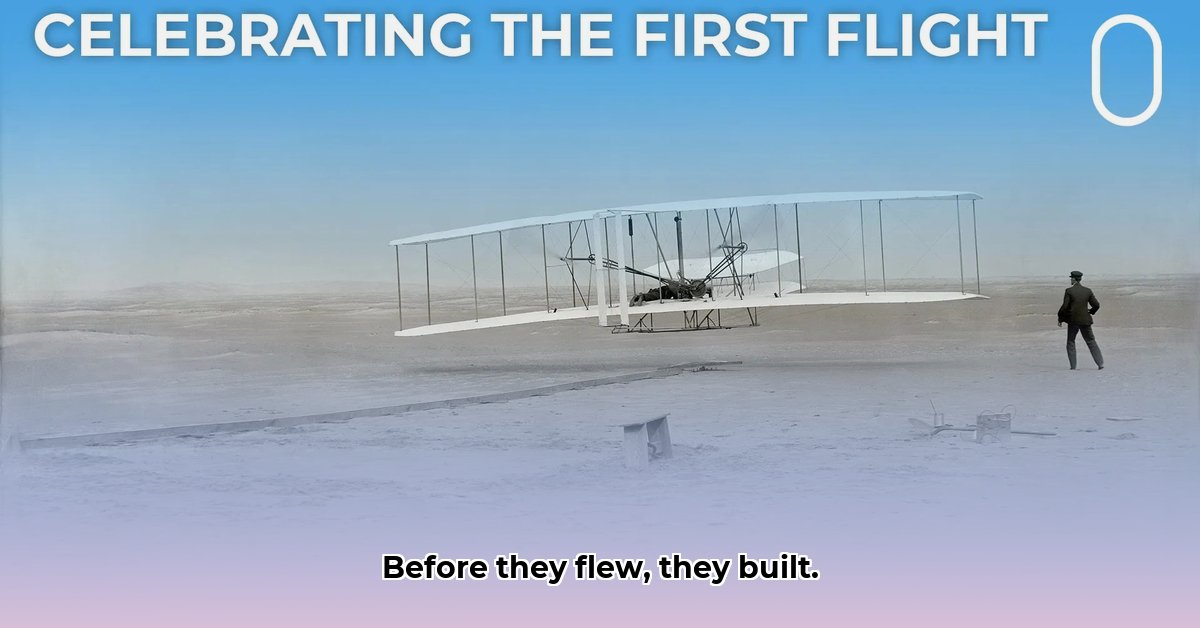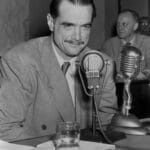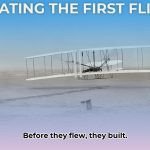December 17, 1903, marks the Wright brothers’ historic first flight, an achievement built upon years of dedicated effort, groundbreaking ideas, and relentless experimentation. More than just constructing a plane, their journey was about mastering the art of flight through clever engineering and unwavering determination. This narrative explores their journey, innovations, challenges, and enduring impact on aviation.
The Wright Brothers: The Meticulous Process Behind Their First Flight
The Wright brothers’ success wasn’t accidental; it was the culmination of years of painstaking effort dedicated to mastering controlled flight. Their commitment to fundamental principles underpinned their incredible journey, marked by countless experiments that refined their understanding of aerodynamics and aircraft design, leading to the dawn of aviation. This involved a constant cycle of learning, adapting, and innovating, setting them apart from contemporaries like Samuel Langley, who focused on brute power rather than pilot control.
From Gliders to the Dawn of Aviation: Laying the Foundation for Flight Control
Before even considering powered flight, the Wright brothers prioritized understanding airborne control. They recognized, as Wilbur Wright stated, “It is possible to fly without motors, but not without knowledge and skill.” They started with gliders, conducting over a thousand glides from atop Big Kill Devil Hill in North Carolina. These extensive tests in Kitty Hawk offered invaluable lessons. Each flight, whether successful or not, was meticulously analyzed. This iterative process became the cornerstone of their success, as they documented every design change, flight detail, and even crashes. This rigorous data collection facilitated precise adjustments to the glider’s design, allowing them to solve the problem of sustained lift and, more importantly, to control an aircraft while in flight.
Wind Tunnels: Peeking into the Secrets of Airflow and Aerodynamics
Understanding airflow around wings was critical for the Wrights. Existing aerodynamic tables, like those of Otto Lilienthal, proved unreliable. To address this, they constructed their own wind tunnel in Dayton, Ohio. This innovative tool allowed precise airflow control and measurement, enabling them to test various wing shapes systematically. They meticulously recorded the results of these tests, generating their own lift and drag tables, which proved far more accurate than existing data. Their focus was on control, not just speed. This data-driven method distinguished them from contemporaries, allowing them to design efficient lifting surfaces and propellers.
Three-Axis Control: A Revolutionary Leap Forward in Aviation Technology
The Wright brothers revolutionized flight control by mastering three-dimensional control: pitch, roll, & yaw. Their three-axis control system, using wing warping and a movable elevator, was groundbreaking. Wing warping, achieved by twisting the wings asymmetrically, allowed for roll control, enabling the aircraft to bank and turn. A forward elevator controlled pitch, managing the up and down movement of the nose. A rudder controlled yaw, governing the left and right rotation around the vertical axis. This system enhanced aircraft maneuverability and stability, ensuring safe and guided flight. Their innovative solution paved the way for modern aircraft control systems, which still rely on the principles they established.
The Engine: A Perfect Partnership of Engineering and Innovation
While the Wrights designed the airframe and understood the principles of flight, they needed a powerful, lightweight engine. Unable to find a suitable commercially available engine, they designed and built their own with the assistance of their mechanic, Charlie Taylor. Taylor crafted a reliable 12-horsepower engine from scratch in just six weeks. This engine was perfectly matched to the airplane’s needs. Balancing power and weight was critical in aeronautical engineering; the engine was a testament to collaboration and integrated system design. The engine drove two pusher propellers with chains, one crossed to make the props rotate in opposite directions to counteract a twisting tendency in flight. This partnership highlighted the need for perfectly synchronized components.
The Wright Method: Iteration, Experimentation, and Collaboration in Aviation
The Wright brothers’ journey was iterative, marked by setbacks and breakthroughs. They experimented, tested, and redesigned, learning from mistakes. Orville’s technical focus complemented Wilbur’s visionary leadership. Their iterative design, test, analyze, and refine approach was crucial. They meticulously assessed each component of their aircraft. This cyclical process involved continuous adjustment based on observed flight performance. Failing fast and learning quickly became ingrained in their methods.
A Lasting Legacy: More Than Just a Historic Flight Record
The Wright brothers’ 1903 flight initiated modern aviation. Their relentless pursuit of perfection, scientific principles, and innovative design/testing influenced aerospace engineering and set a new standard for aircraft development. Their story exemplifies ingenuity, perseverance, and collaborative teamwork. It established a blueprint for the future of flight built on dedication, patience, and methodical work. The three-axis control system remains the basis of modern aircraft control, and aviation rapidly advanced after their successful flights, leading to the development of more sophisticated planes and engines.
How Did the Wright Brothers Overcome Financial Challenges During Their Flight Development?
The Wright brothers faced financial headwinds, requiring innovative strategies to fund their passion. They had to demonstrate creative financial management skills just as much as engineering proficiency. How did they manage their financial constraints effectively?
Bootstrapping the Dream: Self-Funding and Resourcefulness in Early Aviation
Lacking wealthy investors, the Wright brothers self-funded their aviation experiments using the profits from their bicycle shop in Dayton, Ohio. They prioritized essential materials and creatively repurposed existing equipment. Every dollar was an investment in their dream, making resourcefulness essential. Their sustainable system matched their engineering skills, demonstrating how a modest income stream could fuel groundbreaking innovation.
The Importance of Family Support and Collaboration in Aviation History
The brothers’ collaboration provided shared expertise and a mutual support system, easing the financial burden. Their synergistic financial model extended to their family, whose belief and practical assistance were essential. Their sister, Katharine Wright, played a vital role by managing the household and later handling their correspondence and business affairs, allowing Wilbur and Orville to focus on their experiments.
Iterative Design: Minimizing Costs and Maximizing Efficiency in Aircraft Construction
Their iterative design minimized costs and maximized efficiency. They continuously tested and refined gliders and aircraft, using each iteration to learn and improve. This minimized unproductive spending while extending resources, akin to a lean startup approach. By focusing on incremental improvements and learning from each flight, they avoided costly mistakes and optimized their limited resources.
Strategic Partnerships & Outside Support (Limited): Maintaining Control
While self-reliant, the brothers forged limited partnerships. They protected their intellectual property, refusing to compromise their vision for financial gain, wary of outside influences that might dilute their engineering focus. They strategically engaged potentially beneficial financial support without giving up control of their project. This approach enabled them to retain autonomy over their designs and experimentation.
The Long Game: Patience and Perseverance for Achieving Flight
Their success took years of experimentation, setbacks, and financial strain, demanding perseverance. This dedication overcame financial hurdles, signifying that financial resilience is integral to long-term vision. Their achievement is a testament to never giving up, proving that unwavering commitment can triumph over limited resources.
Key Takeaways:
- The Wright brothers’ financial success originated from using their bicycle business earnings.
- They exhibited resourcefulness, meticulous budgeting, and material reuse.
- Their collaborative efforts and family support played a crucial role.
- They employed an iterative design process minimizing costs and maximizing efficiency.
- The brothers remained primarily self-funded. Limited strategic partnerships and support were sought.
- Their long-term vision and perseverance were essential for overcoming financial difficulties.
The Wright Brothers’ Iterative Approach: From Gliders to Powered Flight
Key Takeaways:
- The Wright brothers’ success stemmed from a systematic, iterative process, not just a single invention.
- Their mastery of controlled flight through glider experiments was paramount.
- Their innovative three-axis control system revolutionized aircraft design.
- The creation of a custom engine by Charlie Taylor was crucial to the project’s success.
- Meticulous data collection and wind tunnel experiments informed their understanding of aerodynamics.
- Their background in bicycle manufacturing provided invaluable skills in weight management, balance, and control.
- The brothers’ patent applications and management of public perception further cemented their legacy.
The Glider Years: Laying the Foundation for Flight
The Wright brothers evolved an airplane through meticulous design, construction, and testing of gliders in Kitty Hawk, North Carolina. This systematic process of learning and refinement generated data to build their expertise. This painstaking process required dedication, as Orville Wright described, the Outer Banks in North Carolina, “looked very much like the Sahara Desert, as I imagine that to be. There was little excepting sand and sand dunes and sky,” despite the harsh conditions, they persisted. The Wright Brothers’ Iterative Approach: From Gliders to Powered Flight is truly the core of their success.
Mastering Control: Three-Axis Innovation and Aircraft Handling
The Wright brothers focused on three-dimensional control – pitch, yaw, and roll – setting them apart to achieve enhanced three-dimensional maneuverability. Wing warping allowed roll control, by twisting the wings. A movable elevator adjusted pitch, and a rudder controlled yaw. This created the foundation for future aircraft.
Powering Up: Taylor’s Engine and the First Flight
With control mastered, they partnered with Charlie Taylor to build a lightweight engine designed specifically for their aircraft. The Wright Flyer, powered by this engine, flew on December 17, 1903, but this was the culmination of methodical development, not a lucky accident. They had overcome, through deliberate, thoughtful, and well-planned efforts, every obstacle in their way.
Beyond Kitty Hawk: Patents, Perseverance, and Legacy of the Wright Brothers
The first flight was only the beginning. The brothers refined their designs, learned, and improved. They also secured patents for their invention, recognizing the value of their innovative control system and engineering knowledge. Their perseverance and visionary approach transformed flight.
The Wright Brothers and the Evolution of Flight Control Systems
Key Takeaways:
- The Wright brothers’ success stemmed from a meticulous, iterative approach, not a single eureka moment.
- Their wind tunnel experiments and data analysis revolutionized aerodynamic understanding.
- The Wright Brothers and the Evolution of Flight Control Systems involved a three-axis control system, a crucial innovation.
- Their systematic approach, combining engineering, scientific rigor, and independent funding, set them apart.
- Their legacy extends beyond the first flight; it laid the foundation for modern aviation engineering.
From Gliders to the First Flight: A Journey of Incremental Improvements in aviation design
Before their flight, the Wright brothers immersed themselves in the existing body of knowledge, studying the work of aviation pioneers like Otto Lilienthal and Octave Chanute to build upon existing understanding. Their systematic experimentation with early gliders yielded invaluable data about aerodynamics and control, refining their understanding of the interplay of forces in flight. Their disciplined approach and meticulous record-keeping set them apart.
The Wind Tunnel: A Critical Turning Point in Aerodynamic Research
Recognizing the limitations of existing aerodynamic data, the Wright brothers designed and built their own wind tunnel. This innovative tool allowed them to test wing designs under controlled conditions, generating substantial and reliable aerodynamic data critical for flight control and aircraft design. This data drastically improved the accuracy and efficiency of their design process.
Mastering Three-Axis Control: The Key to Sustained Flight and Aerial Maneuvering
The Wright brothers’ genius lay in their holistic approach to flight control. They understood that true mastery of the air required simultaneous control over all three axes of motion. They developed a revolutionary three-axis control system, consisting of wing warping and a rudder, that enabled precise and responsive control. This level of control allowed for greater precision and stability during flight, leading to controlled, sustained flight. Their innovation marked the critical difference between a short, uncontrolled jump and a sustained, purposeful journey through the air.
The Importance of Iteration and Refinement of Aviation Engineering
The Wright brother’s iterative journey used each flight, each design modification, and each perceived failure as a valuable learning opportunity. They meticulously analyzed the results of their experiments, refining their understanding of aerodynamics and control, and then applying those findings to subsequent designs. Their approach emphasized continuous refinement, leading to substantial advancements in aircraft technology.
A Legacy of Engineering Excellence in the Sky
The Wright brothers’ success wasn’t solely about achieving the first powered flight. Their systematic approach and innovative use of data revolutionized the field of aeronautical engineering. They built upon the work of others, pioneered wind tunnel testing, and established a solid foundation for future aviation advancements. Their legacy of detailed methodology and scientific investigation is continued in The Wright Brothers and the Evolution of Flight Control Systems. As Wilbur Wright told Carl Dienstbach, “the secret of flight is the man; not the machine.”
- Unlocking Flight: The Wright Brothers’ Engineering Triumph:A Meticulous Process - August 4, 2025
- Churchill’s Wilderness Years: From Exile to Prime Minister - August 4, 2025
- Unlocking Time’s Secret: The Arrow of Time, Past vs. Future Insights - August 4, 2025













